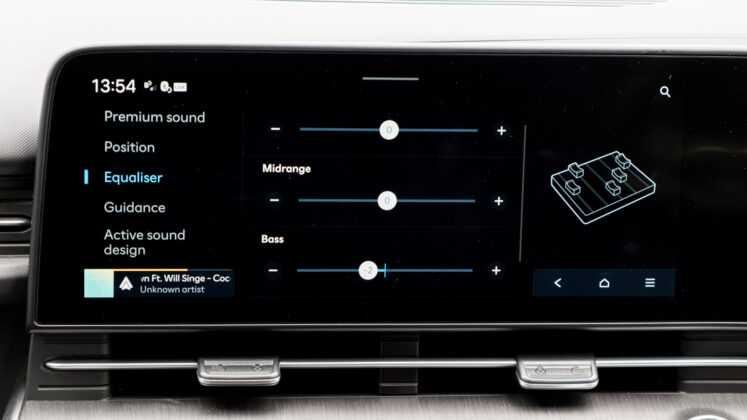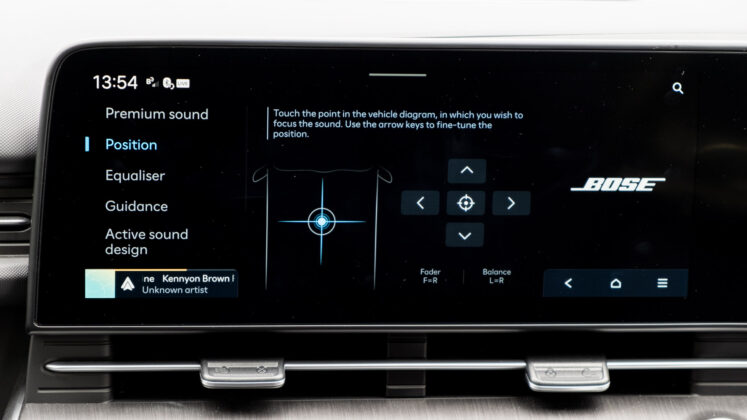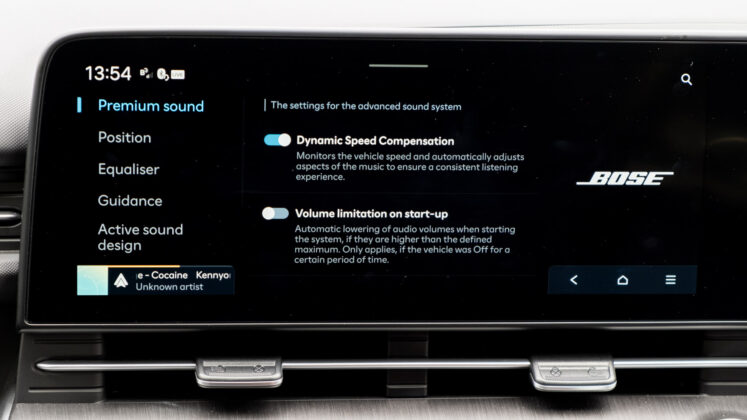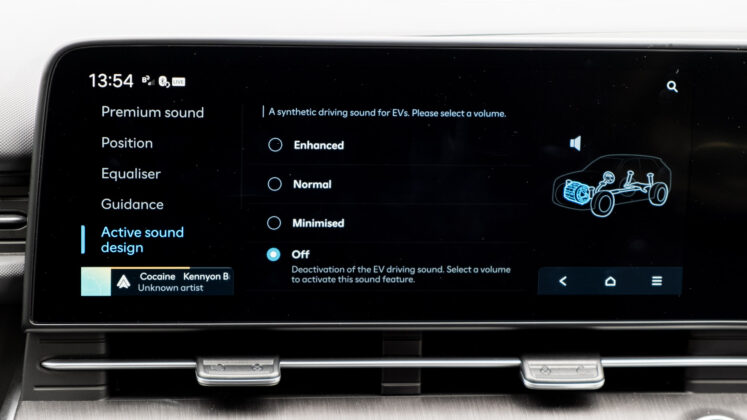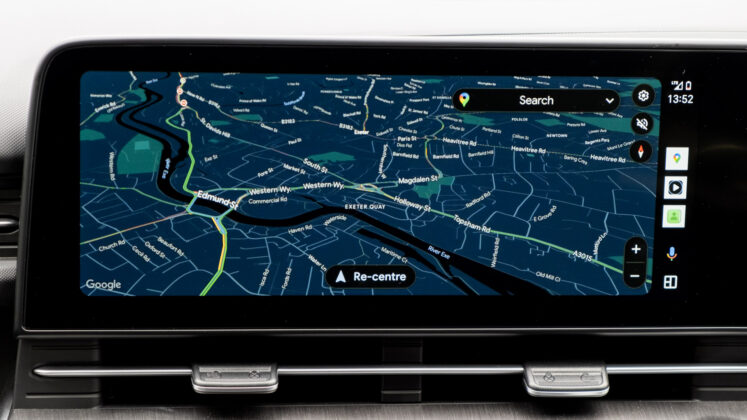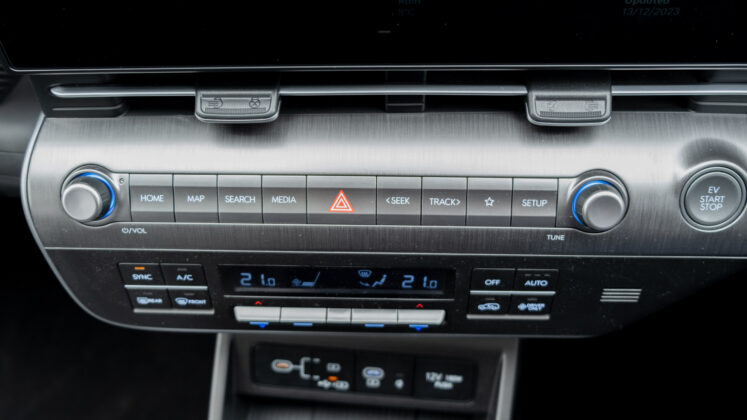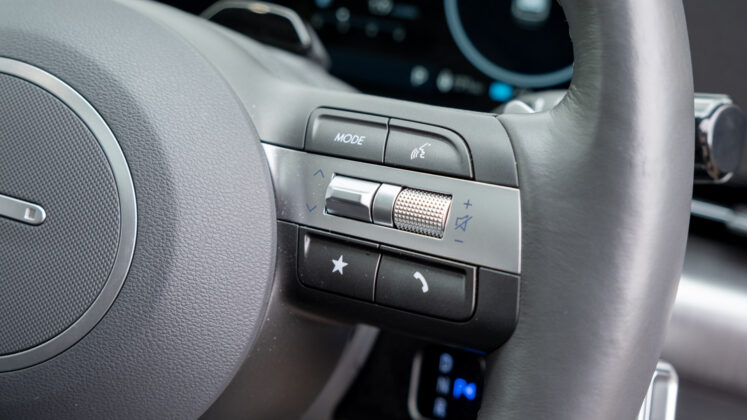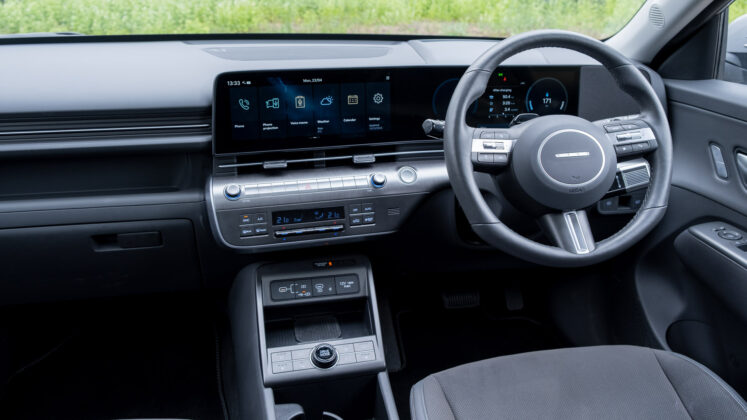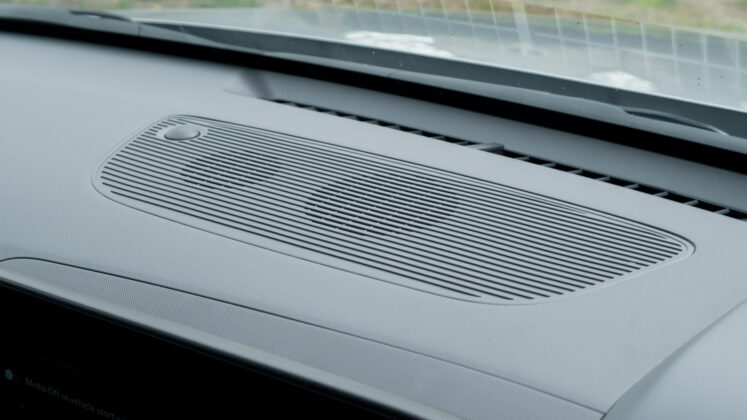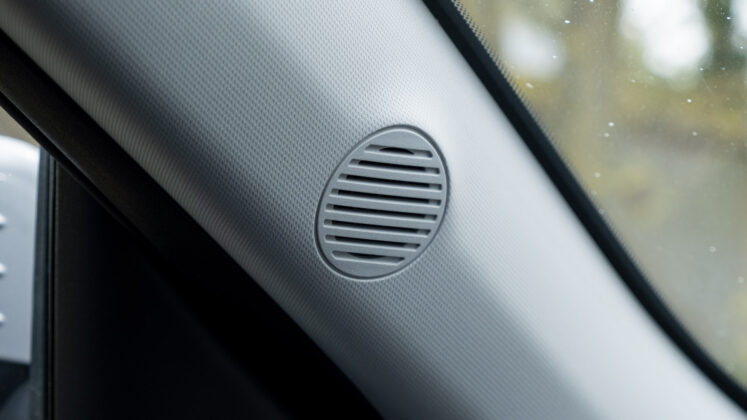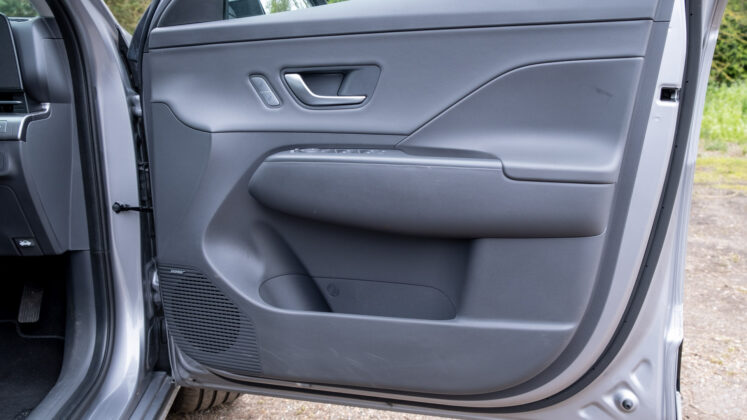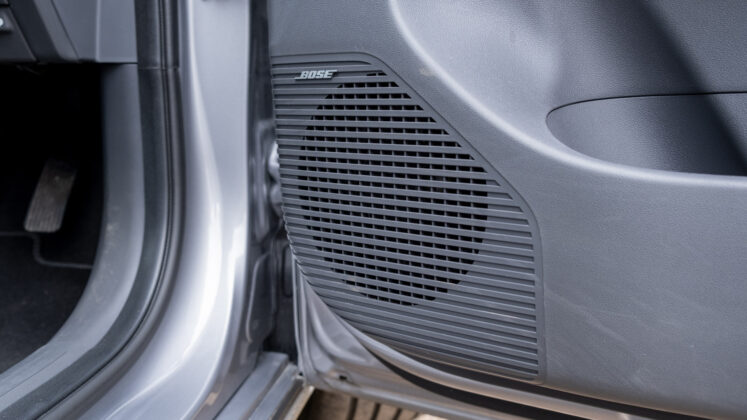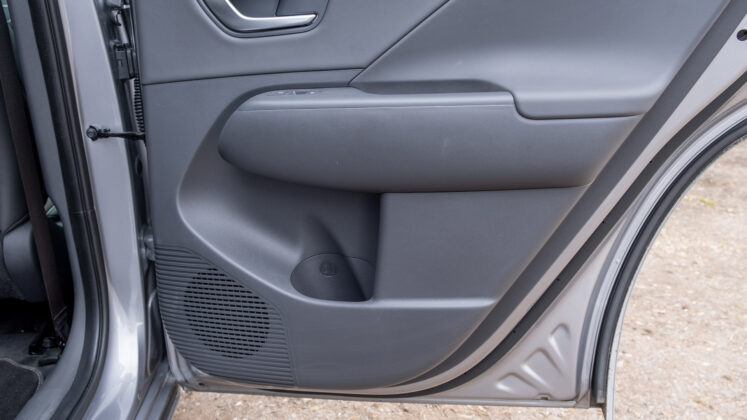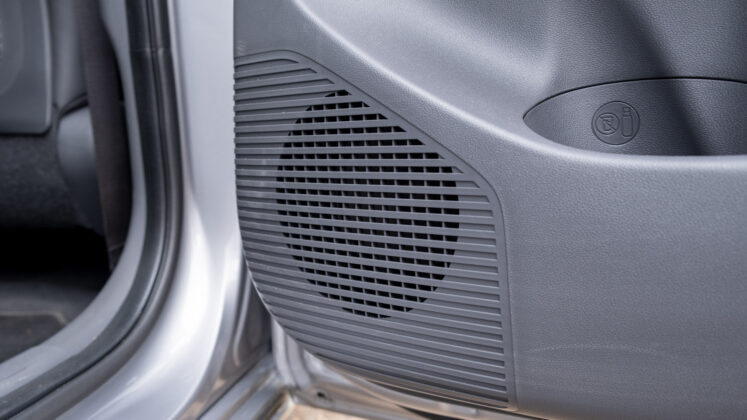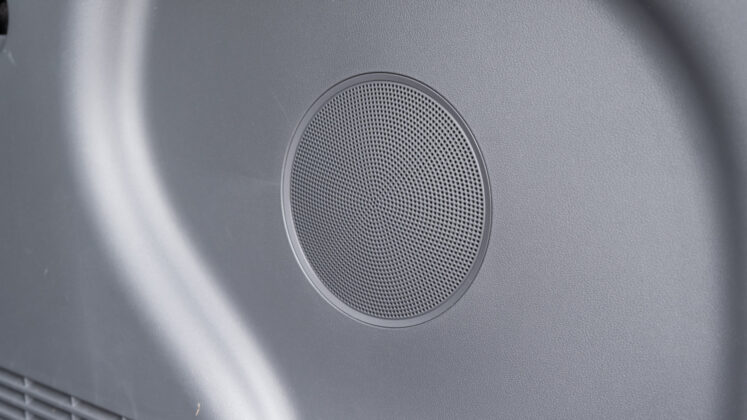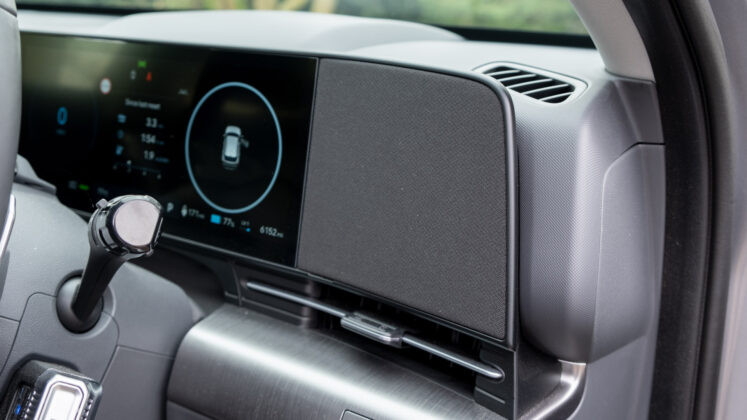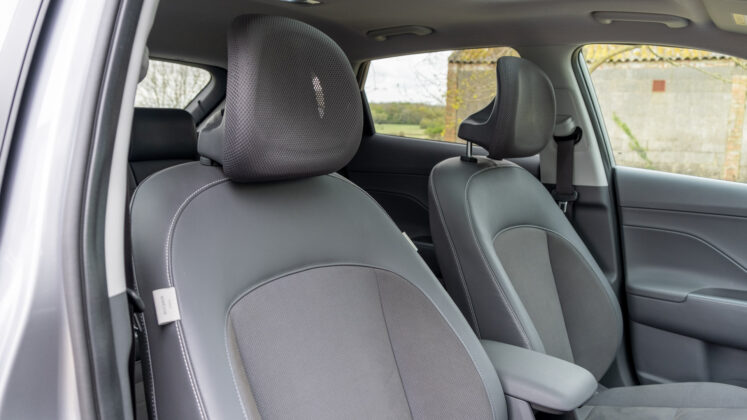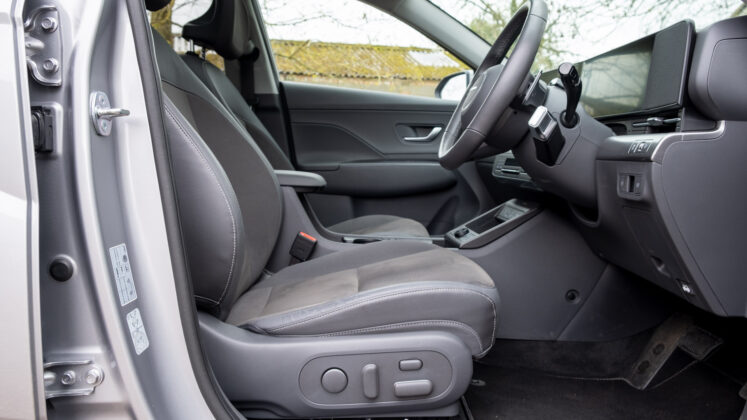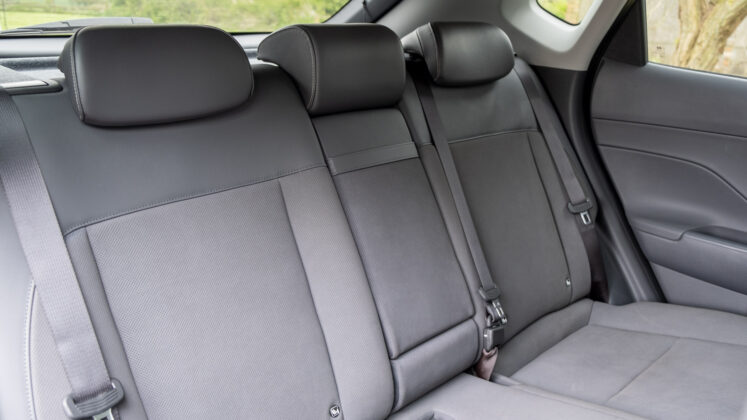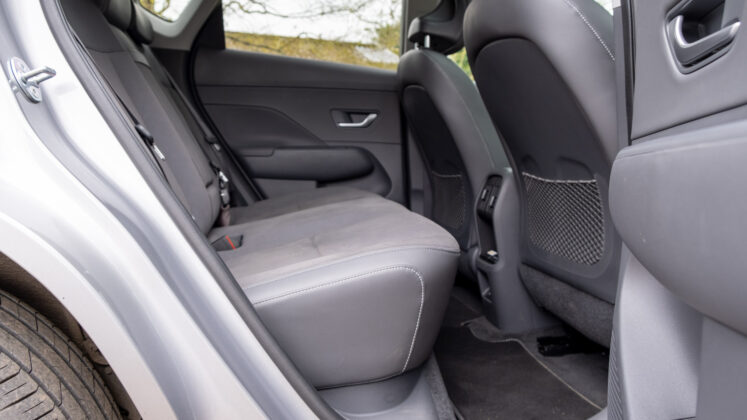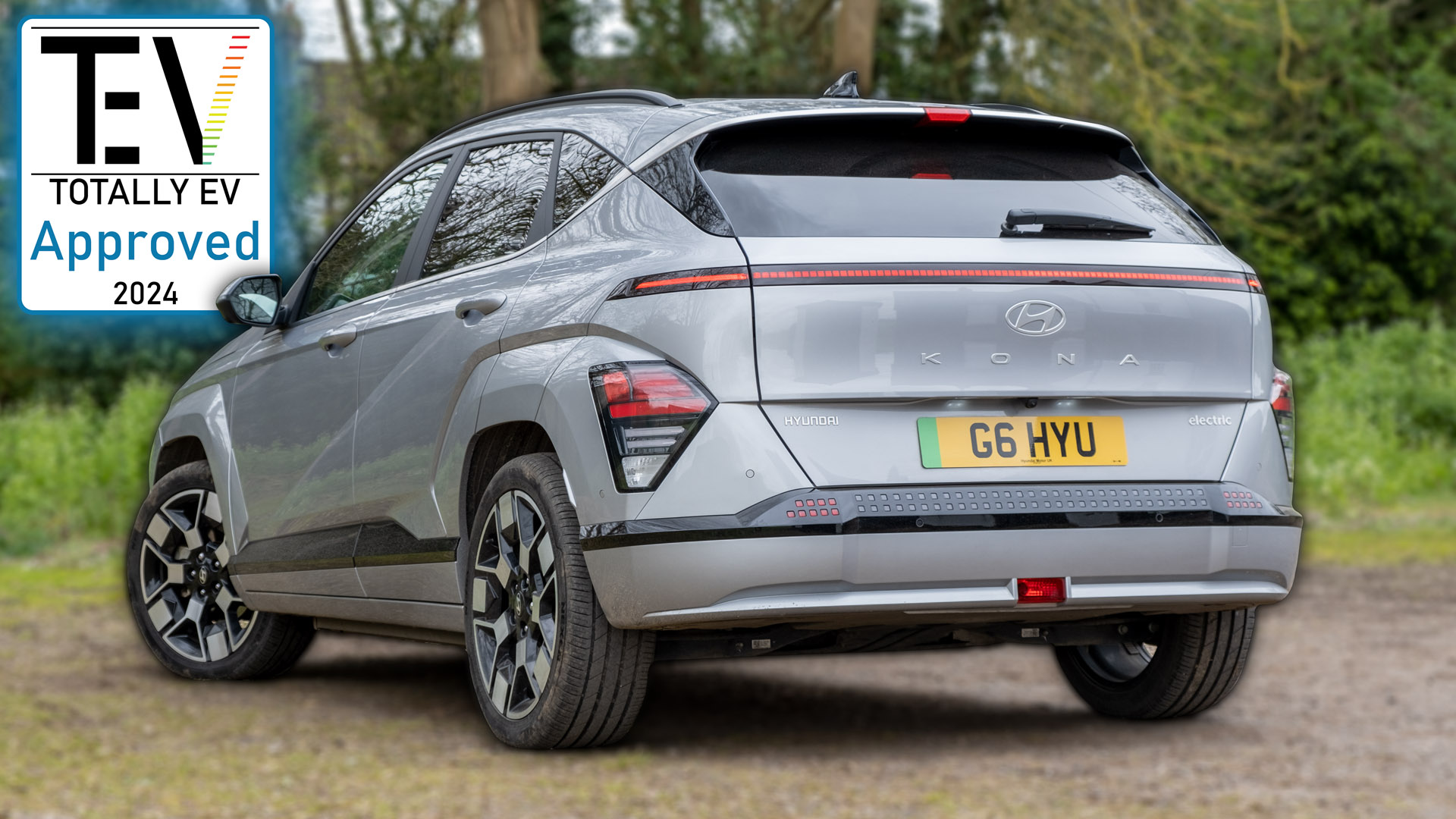The new Hyundai Kona takes on from its predecessor and attempts to maintain its reputation of being one of the best compact electric SUVs on the market. While there are many improvements and design changes that have taken place, we found that the updated model lacked the excellent range and comfort of the older generation variant.
At the time of writing and in the UK, the Kona Electric is available in four trims: Advance, N Line, N Line S, and Ultimate. This affects the audio system, as the former two house a six-speaker setup while the latter two (on review) have a 7+1 (technically 8+1) Bose configuration.
Click here to read the full Hyundai Kona Electric review
Hyundai Kona audio setup
To tinker with the vehicle’s audio settings, one has to navigate to the ‘Sound Settings’ tab on the 12.3″ infotainment system. Here, you’ll find a three-band equaliser, below are our optimal settings:
- Dynamic speed compensation: On
- Active Sound Design: Off*
- Treble: +0
- Midrange: +0
- Bass: -2
- Balance & Fader: Centre
*We’d suggest disabling Active Sound Design as it plays unnecessary fake motor noises through the speaker system.
To connect to the vehicle’s audio system using your smartphone, you can opt for a Bluetooth connection, however, you’re limited to using the SBC and AAC codecs, which degrade audio fidelity due to compression. Thankfully, both Android Auto and Apple CarPlay are supported over a wired and wireless connection. The former is the best option as it minimises transmission loss.
As for media controls, there are the onscreen touch controls, a volume wheel by the dashboard and smartly laid out physical buttons on the steering wheel, which allow you to change tracks and adjust the playback volume.
Read next: Hyundai Ioniq 5 audio review: Bose 7+1 sound system!
Hyundai Kona audio performance
For a demo of the Kona’s audio system head on over to our YouTube channel.
When it comes to its audio configuration, the Advance and N Line trims have a six-speaker configuration: a woofer within each of the four doors and tweeters within each of the A-pillars.
Opt for the N Line S or Ultimate trims, and you’ll find a 7+1 Bose audio system, which technically could be seen as an 8+1 configuration. This is due to the upgraded setup adding a subwoofer in the boot and a centre speaker within the dashboard. The centre speaker has a single housing comprised of a midrange and tweeter setup.
Unfortunately, Hyundai and Bose have yet to provide us with any information on the driver sizes or the total wattage. Note, that despite its design, the fabric mesh area by the instrument cluster doesn’t form part of the audio system.
The addition of a subwoofer certainly helps bolster that low-end extension, which means you’ll be able to hear that bass rumble in T-Pain’s ‘Ur Not The Same’. For those who want more oomph in their music, the Bose system certainly provides that upgrade over the stock system configuration. However, the sideward-firing speaker is still a little underwhelming when compared to other premium audio systems out there in the market. There’s a cut-off in the sub-bass tones.
Make no mistake, however, the mid-bass tones are punchy. No matter where you’re sat within the cabin the woofers found within each of the four doors provide a healthy low-end slam. In fact, we felt it was overpowering and as such we took away two notches from the Bass EQ; it’s otherwise a bit bloated and leaks into the mids.
Read next: The best dash cams to mount inside your vehicle
Speaking of which, the midrange is a bit recessed. Both male and female vocals don’t come to the foreground as you might expect from a Bose system. Despite lowering the impact of the overpowering bassline, Inna’s voice in ‘Primera Vez’ is drowned out by the beat. One might be tempted to boost the mids through the infotainment system but doing so will alter vocal accuracy by adding an unnecessary reverb.
Similarly, the highs are hard to alter, as at the front of the cabin the tweeters positioned within the A-pillars provide a good amount of energy. Still, they could have done with half an increase to Treble EQ. Adding one extra notch adds a little sibilance and harshness at the top end, resulting in ear fatigue. Unfortunately, at the rear of the cabin, the highs are unsurprisingly a bit tame due to the omission of rear tweeters.
One could say the same thing about its soundstage, as the lack of extra audio drivers at the rear negatively impacts instrument separation. Thankfully, that’s not the same at the front of the cabin; that singular speaker unit found within the dashboard aids in differentiating between notes, and thus is a nice inclusion over the stock system. Compared to other systems, however, the upgraded Bose system still lacks width and depth – music sounds a little closed and doesn’t have that openness to it.
Finally, onto cabin noise, the new Kona does an excellent job at keeping exterior noise down to a minimum. Granted, there’s a bit of tyre noise that creeps in at higher speeds, but it’s minimal. Using a sound meter we recorded, 35-36 dBA at a standstill; 52-54 dBA while driving at 20-30mph; 58-62 dBA while driving at 40mph; and 69-73 dBA when at 70mph.
Read next: Tesla Model Y audio review: An audiophile’s dream?
TotallyEV’s verdict on the Hyundai Kona’s audio system
On the whole, the Bose audio system is a worthy upgrade over the stock system. It provides a bettered soundstage reproduction and an extension in the sub-bass tones. As such, the audio system found in the N Line S and Ultimate trims receives TotallyEV’s Approved audio award.
Find the best Hyundai Kona deals
If you’re a serious audiophile, however, you might want to look at alternative vehicles, such as the BMW iX1, Genesis GV60, Kia Soul EV and Tesla Model Y for a superior listening experience. If you’re set on getting the new Kona, consider going to an audio specialist to fit an aftermarket solution.
How would you rate the Hyundai Kona’s audio system? Let us know in the comments section below or via social media; we’re on: YouTube, Instagram, Facebook, X and LinkedIn.

